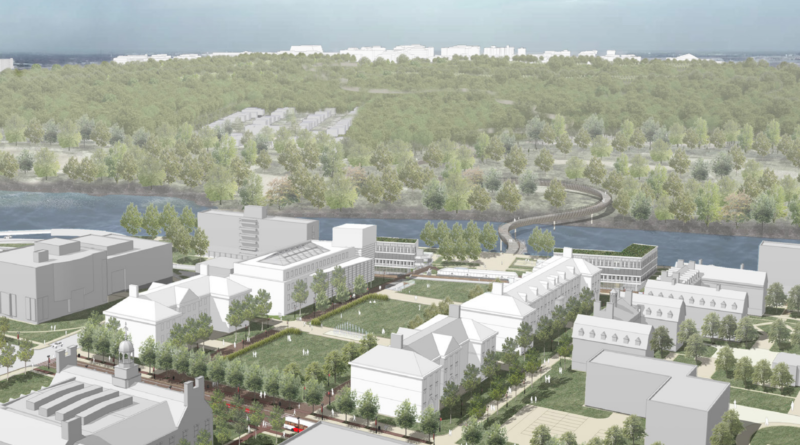Rutgers 2030 Master Plan Finds University Going Green
NEW BRUNSWICK, N.J. — With a new emphasis on environmental conservation, New Jersey’s Rutgers University might have to change its traditional school color from scarlet to green.
According to a master plan released on the university’s website, the initiative, entitled Rutgers 2030, is a comprehensive re-envisioning of the campus that includes recommendations for “the functional, physical and psychological connections within and between campus districts as well as to the surrounding community and natural ecosystem.”
Rutgers also plans to update its transit student centers, housing, athletics facilities and on-campus transit hubs in an earth-friendly manner within the next 15 years.
“As far as construction, we adhere to the U.S. Green Building Council’s guidelines for LEED-rated Silver buildings, which are integrated into our design standards and construction guidelines, and collectively serve to reduce our overall carbon footprint,” said Frank Wong, assistant vice president of University Facilities and Capital Planning to the Daily Targum, a local news service. “We source materials within a 500-mile radius, and seek to use recycled materials in construction.”
As Wong explained, the university, which was originally founded as Queen’s College in pre-revolution 1766, has committed to installing 33 acres of solar panels on campus as well as promoting a variety of carbon-neutral transportation alternatives like bicycling. Moreover, initiatives are afoot to better use open space adjacent to nearby Raritan River.
The university sought input from a broad array of stakeholders while devising Rutgers 2030. About 8,000 members of the surrounding community were surveyed, likewise, more than 30 presentations and town hall meetings were conducted. Ditto meetings with administrators, faculty and groups, including the University Committee for Sustainability, which includes student representation. Energy Conservation Manager Michael Kornitas continues to meet with student groups regularly as well.
Diminishing the use of fossil fuels in relation to the campus is also on the agenda. Since such energy sources produce carbon emissions, the university’s master plan outlines the redevelopment of transportation infrastructure with an emphasis on non-vehicle transportation like biking and walking to help shrink the carbon footprint.
The master plan consulting team included New York-based Robert A.M. Stern Architects and Toscano Clements Taylor, Massachusetts-based Sasaki Associates and VHB, and San Francisco-based Buro Happold.

